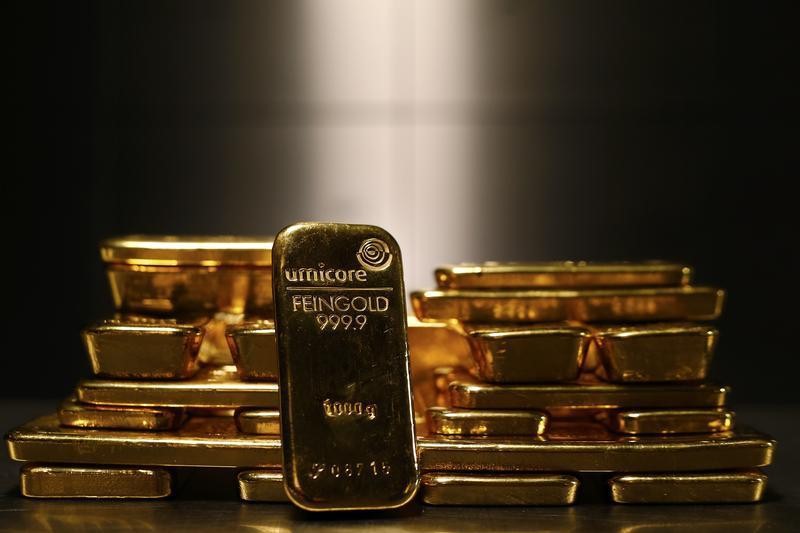By Barani Krishnan
Investing.com - “What inflation?” — Gold bulls might be asking on Wednesday after a breakout in US consumer prices for April led to a familiar rally in the dollar and bond yields versus the yellow metal.
Gold slipped further from the target of longs in the market to breach $1,850, after coming tantalizingly close to the resistance several times since last week upon its return to the $1,800 pricing it last held in February.
Benchmark gold futures on New York’s Comex settled down $13.30, or 0.7%, at $1,822.80.
The spot price of gold was down $14.23, or 0.8%, to $1,823.22, by 1:52 PM ET (17:52), virtually matching the settlement in futures.
Traders and fund managers sometimes decide on the direction for gold by looking at the spot price — which reflects bullion for prompt delivery — instead of the futures.
The U.S. Consumer Price Index grew by 4.2% over a one-year period in April for its largest increase in almost 13 years, the Labor Department announced on Wednesday, confirming a huge tick up in inflation after months of commodity price increases in an economy rapidly recovering from the coronavirus pandemic.
Logically, gold should have rallied on the ramping inflation signal given its long-standing role as a store of value and hedge against rising costs.
But in markets ruled by distorted expectations and hype, there is little room for logic.
So, the Dollar Index — which pits the greenback against the euro and five other major currencies — rose instead, by 0.7%, in its first rebound in five days.
The dollar’s recovery was helped, of course, by yields on the 10-year Treasury note, which hit a session high of 1.693%, nearing the key 1.7% last seen on April 13.
Yields surged as bond traders once again sold off US Treasuries on the assumption that ramping U.S. inflation numbers will push the Federal Reserve to hike interest rates earlier than expected in 2023.
Traders on US money markets were pricing in a 100% probability of a 25 basis-point hike in rates by December 2022, versus 88% before the release of the CPI data, money market information showed.
The Fed instead pushed back such notions on Wednesday, with Vice Chairman Richard Clarida affirming his boss Jerome Powell’s assessment that the higher U.S. inflationary signals now were transient and did not require a rate hike.
“Notwithstanding the recent flow of encouraging macroeconomic data, the economy remains a long way from our goals, and it is likely to take some time for substantial further progress to be achieved,” Clarida said in a speech on the U.S. economic outlook.
“We also expect it will be appropriate to maintain the current target range for the federal funds rate at 0 to 0.25 percent until labor market conditions have reached levels consistent with … assessments of maximum employment,” he added.
The U.S. economy grew at an annual rate of 6.4%in the first quarter of this year after shrinking 3.5% for all of 2020. The Fed has forecast an economic growth of 6.5% for all of 2021 although it said it does not expect “full employment” — defined by a monthly unemployment rate of 4.0 percent or lower — before 2023. Unemployment stood at 6.1% in April.
